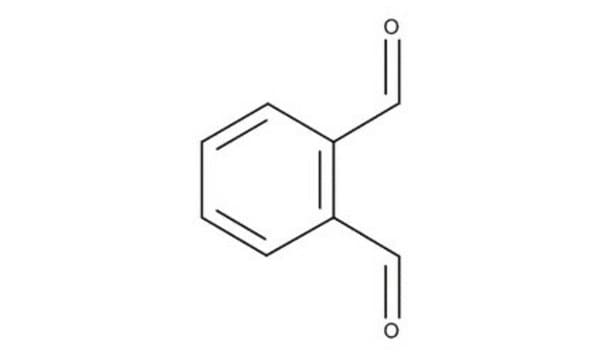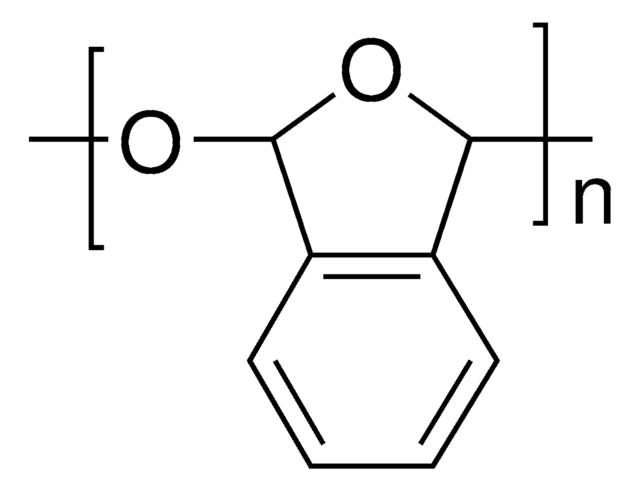P1378
Phthaldialdehyde
≥97% (HPLC), powder or crystals
Synonym(s):
o-Phthalaldehyde, o-Phthalic dicarboxaldehyde, Benzene-1,2-dicarboxaldehyde, OPA
About This Item
Recommended Products
Assay
≥97% (HPLC)
form
powder or crystals
color
white to light yellow
mp
55-58 °C
storage temp.
2-8°C
SMILES string
O=Cc1ccccc1C=O
InChI
1S/C8H6O2/c9-5-7-3-1-2-4-8(7)6-10/h1-6H
InChI key
ZWLUXSQADUDCSB-UHFFFAOYSA-N
Looking for similar products? Visit Product Comparison Guide
Application
- to detect Arg through spectrophotometry using end-point fluorescent sensitive detection
- as a reagent stream with the sample to produce a fluorescent product for determining ammonia in seawater
- in the o-phthaldialdehyde spectrophotometric assay (OPA test) to determine the proteolytic activity (PA)of the strains and the commercial cultures
Biochem/physiol Actions
Signal Word
Danger
Hazard Statements
Precautionary Statements
Hazard Classifications
Acute Tox. 3 Oral - Aquatic Acute 1 - Aquatic Chronic 1 - Eye Dam. 1 - Skin Corr. 1B - Skin Sens. 1 - STOT SE 3
Target Organs
Respiratory system
Storage Class Code
6.1A - Combustible acute toxic Cat. 1 and 2 / very toxic hazardous materials
WGK
WGK 3
Flash Point(F)
269.6 °F - closed cup
Flash Point(C)
132 °C - closed cup
Personal Protective Equipment
Certificates of Analysis (COA)
Search for Certificates of Analysis (COA) by entering the products Lot/Batch Number. Lot and Batch Numbers can be found on a product’s label following the words ‘Lot’ or ‘Batch’.
Already Own This Product?
Find documentation for the products that you have recently purchased in the Document Library.
Customers Also Viewed
Our team of scientists has experience in all areas of research including Life Science, Material Science, Chemical Synthesis, Chromatography, Analytical and many others.
Contact Technical Service













